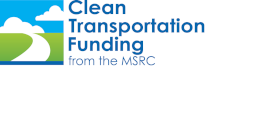
Over the past two years, the California State budget has invested billions of dollars in zero- emission vehicle (ZEV) incentives and infrastructure. Unfortunately, due to falling state revenue, the Governor’s proposed FY 2023-24 state budget significantly reduces state funding for clean transportation.
For ZEVs and infrastructure, the 2021 and 2022 Budget Acts committed $10 billion over five years. However, this year’s budget maintains only $8.9 billion of this funding, and also includes $2.5 billion of General Fund reductions across various ZEV programs. Notable ZEV budget reductions include:
- Heavy-duty zero-emission vehicles and supporting infrastructure – a reduction of $1.5 billion in General Funds, which is partially offset by a shift of $839 million to the Greenhouse Gas Reduction Fund (GGRF) This maintains approximately $5.3 billion (89 percent) for programs that support drayage, transit and school buses, and port ZEVs and infrastructure.
- Equitable zero-emission vehicles and infrastructure – a reduction of $745 million in General Funds, which is partially offset by a shift of $535 million to the GGRF. This maintains about $2.1 billion (91 percent) for programs that expand affordable and convenient ZEV infrastructure access in low-income communities.
- Zero-emission mobility – a reduction of $184 million in General Funds, which is partially offset by a shift of $25 million to the GGRF. This maintains approximately $180 million (53 percent) for sustainable community-based transportation equity projects that increase access to zero-emission mobility in low-income communities.
- Emerging opportunities and federal programs – a reduction of $133 million in General Funds, which is partially offset by a shift of $40 million to the GGRF. This maintains about $1.3 billion (93 percent) to invest in demonstration and pilot projects in high carbon-emitting sectors, such as maritime, aviation, rail, and other off-road applications, as well as support for hydrogen infrastructure and vehicle grid integration.
To achieve the state’s climate and clean transportation goals, last year’s budget called for $13.8 billion in funding for transportation projects. This year’s proposed budget includes $2.7 billion in General Fund reductions, partially mitigated by an additional $500 million from state transportation funds, to maintain $11.6 billion (84 percent) of these investments. Significant budget adjustments include:
- Transit and Intercity Rail Capital Program – a reduction of planned funding in 2023 and 2024 from $2 billion each year to $1 billion in 2023-24 and $500 million in 2024-25 and 2025-26. This maintains approximately $5.7 billion (74 percent) of the original $7.7 billion planned additional funds for local transit capital infrastructure projects.
- Active Transportation Program – a reduction of $500 million in General Funds, with $300 million of the reduction being restored from the State Highway Account funds, for a net reduction of $200 million. This will allow the program to sustain all of the programming capacity approved in the 2023 programming cycle.
- Climate Adaptation Program – a shift of $200 million in General Funds for $200 million in State Highway Account funding, which will not impact the project funding that has been allocated.
Volatile budget years, such as this one, makes the MSRC’s regional Clean Transportation Funding so valuable to support clean air projects in the South Coast. The MSRC’s funding of nearly $16 million offered annually (or in combined Work Programs) can be an ongoing part of the solution to help leverage state and federal funding to implement local clean air plans.
State Budget committee and subcommittee hearings will take place in the Legislature during the spring, where many of the budget details will be worked out. The Governor’s budget May Revise will be released in mid-May. The Legislature has until June 15 to pass the state budget; however, several clean transportation funding initiatives will likely not be finalized until the end of this year’s legislative session.
